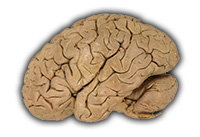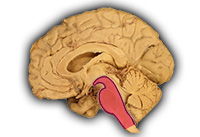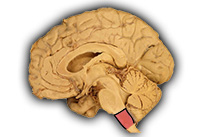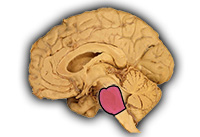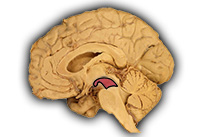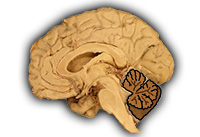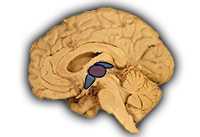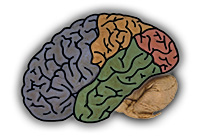Nervous Tissue : The Brain
The Brain
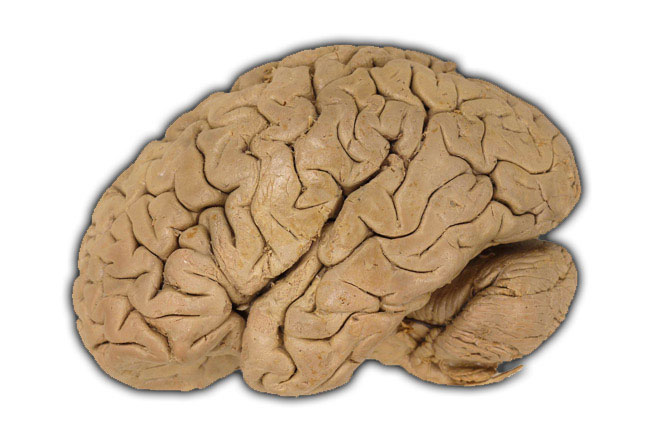
The brain is the part of the central nervous system within the cranial cavity. It is the control centre for registering sensations, correlating them with one another as well as stored information, making decisions, and taking actions.
The brain consists of four major parts, the brain stem, cerebellum, diencephalon, and cerebrum.
In this interactive you will learn more about the location, structure and function of each of these parts of the brain.
Brain Stem
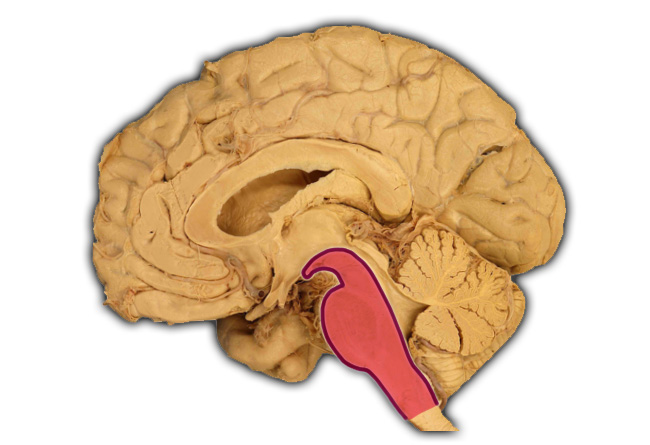
Location
Between the spinal cord and the diencephalon.
Structure
Consists of three structures: medulla oblongata, pons, and midbrain. Contains all of the sensory (ascending) tracts and motor (descending) tracts that extend between the spinal cord and other parts of the body.
Functions
Regulates vital body functions including heart rate, blood pressure and breathing. Damage to this area of the brain can cause death.
Medulla Oblongata

Location
Most inferior portion of brain stem.
Structure
Is continuous with the spinal cord.
Functions
Regulates heartbeat, blood vessel dilation, breathing, swallowing, vomiting, coughing, sneezing, balance and coordination.
Pons
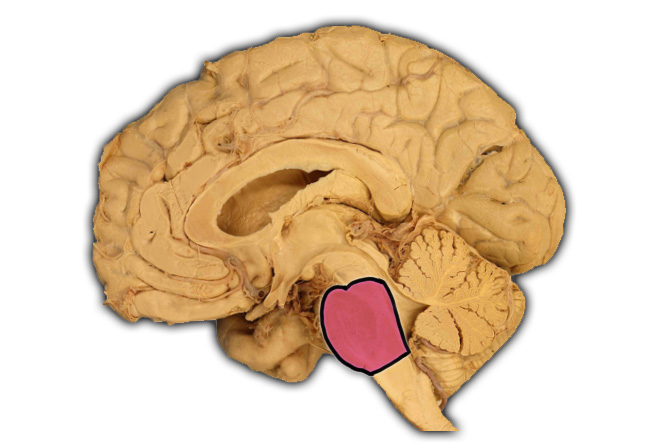
Location
Between the spinal cord and the diencephalon.
Structure
The term ‘pons’ means bridge, because a function of the pons is to connect the cerebrum and cerebellum.
Functions
Controls breathing, swallowing and balance (with the medulla), as well as chewing and salivation.
Midbrain
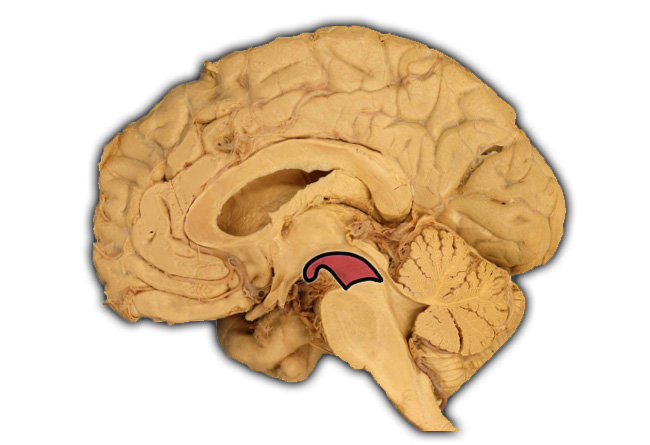
Location
Most superior portion, and smallest part, of brain stem.
Structure
The anterior part of the midbrain contains paired bundles of axons called cerebral peduncles, whilst the posterior part contains four rounded elevations called colliculi.
The midbrain also contains two other clusters of nerve cell bodies called the substantia nigra and the red nucleus.
Functions
Colliculi coordinate movements of the head, eyes, and trunk in response to auditory stimuli (sounds).
The substantia nigra and the red nucleus regulate general body movements.
Cerebellum
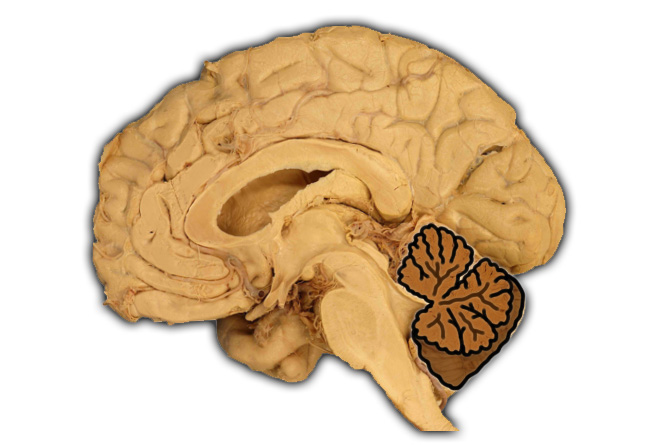
Location
Attached to the posterior brain stem. Occupies the inferior and posterior aspect of cranial cavity.
Structure
The term ‘cerebellum’ means little brain, because the cerebellum resembles a smaller version of the main part of the brain (the cerebrum). Highly folded surface that greatly increases it surface area for neurons.
Functions
Regulates posture and balance.
Diencephalon
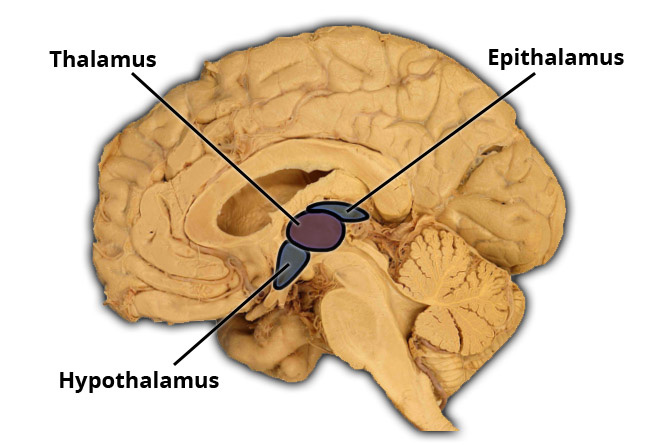
Location
Between the brain stem and the cerebrum.
Structure
Includes three main components, the: thalamus (80% of the diencephalon), hypothalamus and epithalamus.
Functions
The thalamus relays all sensory information (except smell) to the cerebrum, controls some skeletal muscles, and maintains consciousness.
The hypothalamus controls and integrates activities of the autonomic nervous system, endocrine system (i.e. hormones), limbic system (i.e. mood, emotion, motivation) and basic body functions including body temperature, thirst, hunger and sexual arousal.
The epithalamus secretes melatonin which promotes sleepiness, and is involved in the emotional response to smell.
Cerebrum
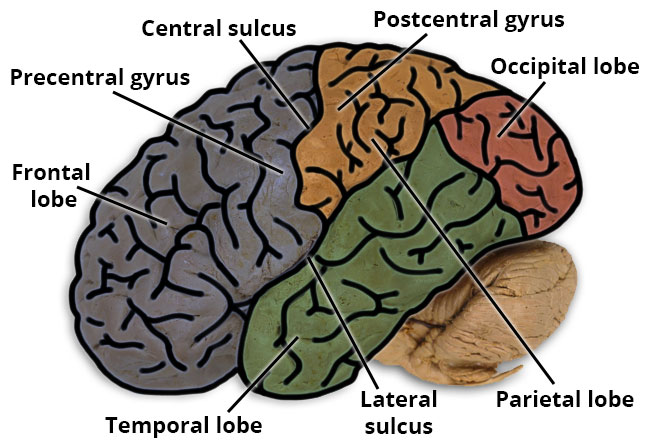
Location
The cerebrum is the largest part of the brain.
Structure
The cerebrum is divided into left and right hemispheres by a longitudinal fissure. On the surface of the cerebrum are numerous folds called gyri separated by grooves called sulci. Each cerebral hemisphere is divided into frontal, parietal, temporal and occipital lobes.
Functions
The frontal lobe initiates voluntary motor functions, aggression, smell and mood. The parietal lobe receives and evaluates most sensory information. The temporal lobe receives and evaluates input for smell and hearing, and plays an important role in memory, thought and judgement. The occipital lobe receives and integrates visual information.
